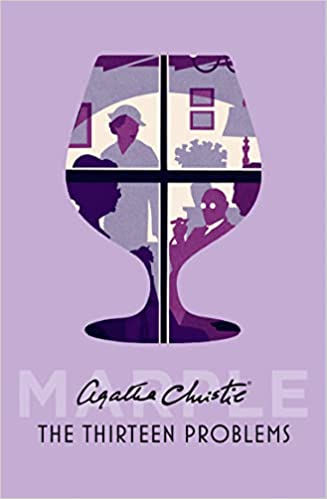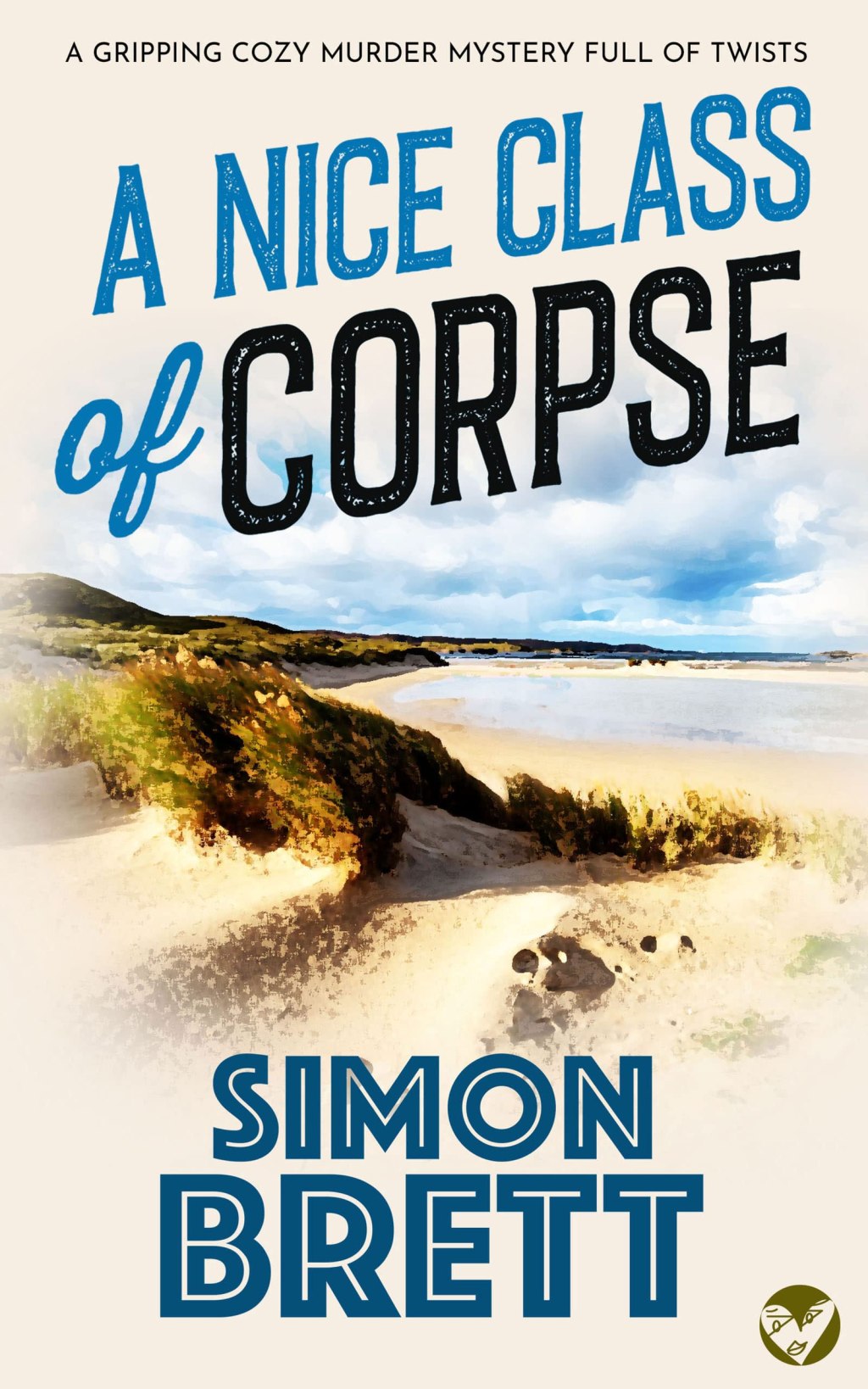Initially published 1928 in The Royal Magazine, “The Blood-Stained Pavement” has been beguiling readers for nearly 100 years. This short story is one of the first to feature Miss Marple. It has several of her trademark tropes: noticing impossibly tiny details and deducing their meaning due to a long habit of studying human nature in the small village of St. Mary Mead.
“The Blood-Stained Pavement” was published again in 1932 in the short story collection The Thirteen Problems by Collins Crime Club in the United Kingdom. In 1933, it was reprinted in America in the short story anthology The Tuesday Club Murders.
Before the story’s action, Miss Marple’s friend, Sir Henry Clithering, invites her to a dinner party. At the dinner party, the guests tell tales of murders with which they have been acquainted to see if the others can work out the murderer.

The Blood-Stained Pavement (1932)
Joyce Lemprière’s tale unfolds amidst the quaint charm of Rathole, nestled in Cornwall. One serene morning, as she diligently captured the essence of the Polharwith Arms on her canvas, the tranquility quickly shattered with the arrival of two cars. The occupants emerged—a couple from the first car and a woman striking scarlet from the second. Denis, from the couple, identified the scarlet-clad woman as Carol, an acquaintance from the past to his unassuming wife, Margery. While Joyce immersed herself in her artwork, she inadvertently eavesdropped on their conversation. Denis proposed a coastal excursion to a nearby cave, suggesting a rowboat, which Carol, opposed to boats, declined, opting to meet them after a leisurely walk. Later that afternoon, as Joyce resumed her painting outside the pub, she glimpsed two bathing suits drying in the sun, assuming the trio had returned. Engaged in unwelcome conversation with a local, Joyce’s inadvertent brushstrokes seemingly depicted bloodstains on the pavement, mirroring an inexplicable reality. Before she could grasp the situation, Denis emerged seeking Carol, who had vanished after their rendezvous at the cave. Mystified, Joyce inspected the pavement to find the bloodstains vanished. Days later, news surfaced of Margery’s disappearance while bathing, her lifeless form discovered with fatal head trauma, presumed to have been inflicted as she dove into rocky waters.
Within the Tuesday Club, skepticism loomed regarding the case’s substance, yet Miss Marple, attuned to nuances of attire, interjected with insight. She underscored the significance of clothing, pivotal in unraveling the mystery. The bloodstains, traced to a scarlet bathing suit, had eluded the perpetrators’ notice when hung out to dry. Joyce corroborated, concluding her narrative. A year later, a déjà vu scenario unfolded at an eastern resort, featuring Denis, Carol, and a new woman, purportedly his wife. Perplexed yet vigilant, Joyce alerted authorities, unveiling a sinister pattern. An ongoing investigation by Scotland Yard revealed Denis’s sinister ploy.

The Review
“The Blood-Stained Pavement” is an entertaining bite-sized Miss Marple story that Joyce Lempriere tells to Raymond West before their eventual marriage of her meager acquaintance with a murderer and then seeing him again right before he killed another lover with his disguised accomplice.
Joyce, I confess, is a somewhat haphazard narrator whose story comes in fits and starts and runs ramble over the past. She tells two events from her past, which are both suspicious deaths surrounding one man, and it’s sometimes hard to deduce her thoughts surrounding the “accidental deaths” that happened in the company of one man. She also intermingles the lore of an old raid that razed the city, so- pay attention to what is happening and when. I found Joan Hickson’s story narration easier to follow than reading it.
The story loses its context when read outside The Thirteen Problem’s dinner party setup. Miss Marple doesn’t investigate the crime; she just listens to Joyce’s story and presents her with how she worked it out correctly. Out of its original format, it feels like Miss Marple swoops in at the end with the correct formula, but that’s not the case in situ. Miss Marple is more subdued in this story; she does not interrupt the story or ask any questions during Joyce’s fluffy narration. She seems more reserved and calm than usual- this a logic puzzle to her, more removed from the high moral stakes that motivate her to avenge Nemesis later in her sleuthing career.
The logic puzzle is quite fun to work through; a man is murdering women without being near them. There’s a lot of gruesome flair with blood stains and luring unsuspecting women to out-of-the-way places before horribly strangling them. I like the slight hints of body horror and Joyce’s camp retelling of the tale, which gave it a sensational B-type horror movie vibe.
“The Blood-Stained Pavement” is an entertaining, slightly camp romp with a somewhat uneven narration and less Miss Marple than other of her short stories.

Agatha Christie Biography
Agatha Christie, born Agatha Mary Clarissa Miller on September 15, 1890, in Torquay, Devon, England, is one of the most celebrated and prolific authors in the history of literature. Known as the “Queen of Crime,” Christie authored 66 detective novels, 14 short story collections, and the world’s longest-running play, The Mousetrap.
Christie’s early life was marked by a voracious love for reading and an imaginative mind. She was homeschooled by her mother and later attended finishing school in Paris. Her writing career began during World War I, where she served as a nurse. It was during this time that she wrote her first novel, The Mysterious Affair at Styles, which introduced the world to one of her most famous characters, the Belgian detective Hercule Poirot.
Christie’s works are renowned for their intricate plots, memorable characters, and surprising twists. Apart from Poirot, she created another iconic sleuth, Miss Marple, a shrewd and observant elderly spinster. Some of her most famous novels include Murder on the Orient Express, Death on the Nile, and And Then There Were None, the latter often cited as one of the best-selling books of all time.
In her personal life, Christie experienced both highs and lows. She married Archibald Christie in 1914, but the marriage ended in divorce in 1928 following his infidelity. The same year, she disappeared for 11 days, a mystery that remains unsolved and has sparked much speculation. In 1930, she married archaeologist Sir Max Mallowan, with whom she shared a deep passion for archaeology, often accompanying him on expeditions in the Middle East.
Christie’s literary achievements were recognized with numerous awards. In 1971, she was appointed Dame Commander of the Order of the British Empire (DBE) for her contributions to literature. Her works have been adapted into numerous films, television series, and stage productions, attesting to their enduring popularity.
Agatha Christie passed away on January 12, 1976, in Wallingford, Oxfordshire, England. Her legacy lives on through her timeless stories, beloved characters, and her unparalleled ability to captivate readers with the art of mystery.





Leave a comment